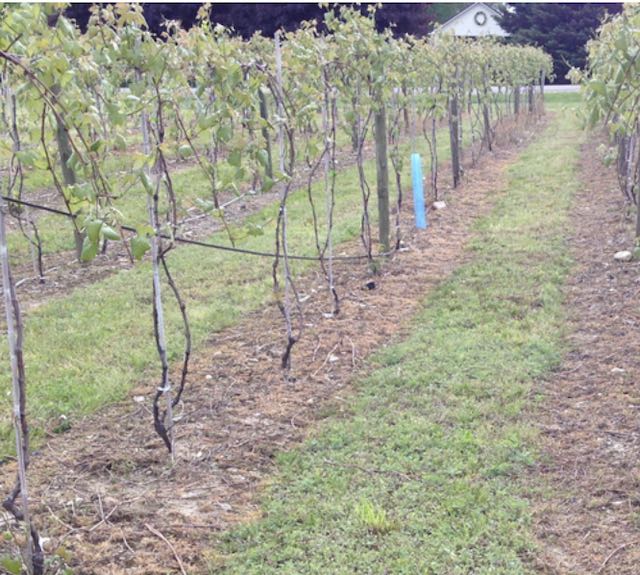Vineyard Trellis and Training (WineMaker)

There are several options available to a backyard grape grower when considering which trellis configuration and which training system to use.
How do we focus on what’s important in a trellis and training system and avoid getting caught up in the mire?
Let’s look at the basic requirements and select a trellis system that has practical trellis design and installation parameters for the backyard grape grower. I have a favorite recommendation for a backyard trellis . . . I will give you my perspective on which one and why later.
Why Do We Need a Trellis?
Grapes naturally grow up towards the sun, competing with and using fellow plants and trees to elbow their way up to the sunlight. A grapevine is perfectly happy hanging around a treetop, stealing the available sunlight, and producing sweet grapes up high. The birds and other critters will relocate the seeds, ensuring that the grapevines will exist in the future. Mission accomplished.
Now we grape loving humans come along and see that it’s not very easy to harvest grapes from the treetops. A better idea is to control these far reaching vines in an attempt to maximize their performance and make it easier for us to harvest the fruit.
The way to maximize the performance of a grapevine is to balance the amount of fruit development with the amount of energy-producing parts of the vine (leaves). Having too much fruit without having enough energy-producing leaves will result in an imbalance. This imbalance creates an environment in which the grapes cannot fully ripen and the vine is stressed by trying to provide all the grapes with sufficient energy, even though it cannot. The vines will allocate some of the energy to the fruit instead of retaining sufficient energy for overwintering and for use during the following spring.
We also would like to configure our grape vine such that the fruit is somewhat exposed to the sun and wind. We don’t want too many leaves creating a canopy that is thick and crowded, creating pockets that trap moisture. An open canopy facilitates fruit ripening by sun exposure, drying of the grapes and leaves quickly after a rain or dew event, and allows good pesticide coverage on the fruit and leaves opposed to just spraying the outside of the canopy.
We need to retain the appropriate number of buds such that we optimize the fruit production and canopy leaf density. Retaining too many buds results in over cropping and an excessively thick canopy that blocks the sun and wind. Over cropping will impair the fruit development and stress out the vines. An excessively thick canopy will promote mildews and other diseases, and also negatively affect grape ripening. A thick canopy also makes it more difficult to harvest in the fall and to prune in the spring. The experts have determined that 4- 7 buds per linear foot of canopy is a good approximation to use when pruning to create a crop load and canopy that are in balance.
In a paper titled “Shoot density and Canopy Management for Hybrids,” Tim Martinson (Senior Extension Associate) and Justine Vanden Heuvel (Assistant Professor) from Cornell University wrote: “Aim for 4-7 shoots per linear foot of canopy (if canopy is vertically or horizontally divided, that’s 4-7 shoots for each portion of a divided canopy), and remove secondary buds where both primaries and secondaries have pushed. The result will be a more open canopy, less leaf layers, better fruit exposure – and hopefully more intense flavors and fewer ‘unripe’ flavors in your wines.” This same paper cites the optimal vinifera shoot density as 4–6 shoots per foot.
What are the “Rules of Thumb” Regarding Trellis and Training Selection, Implementation, and Maintenance?
* A greater percentage of WineMaker’s content is behind a paywall. If you are new to viticulture and/or winemaking, having a subscription for less than $50 annually is paramount. The resources WM provides are unparalleled, providing workshops, conferences, and online archival access to articles.
All geared to the hobbyist!


